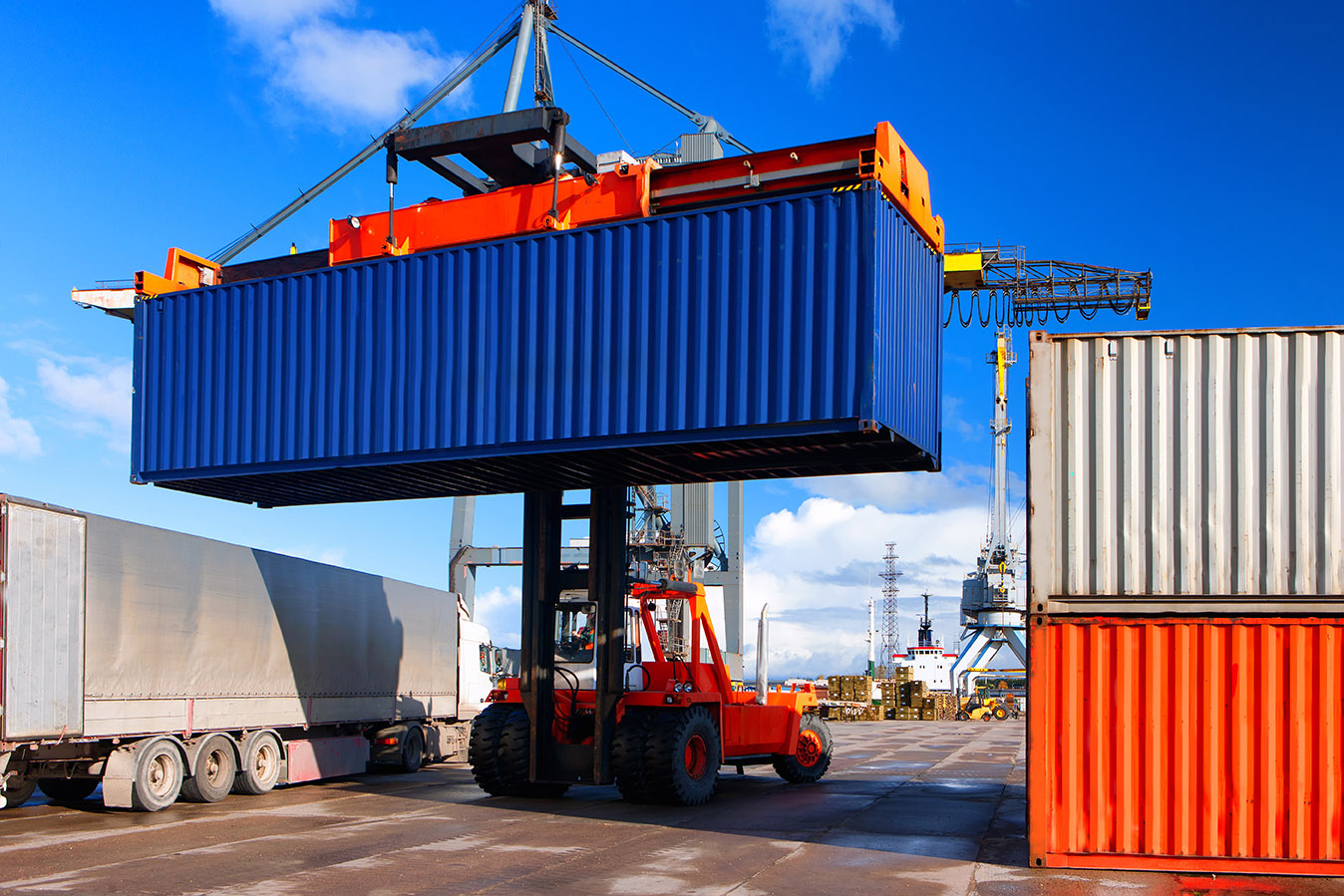
The Ultimate Guide: How to Connect Two Shipping Containers Like a Pro
How to Connect Two Shipping Containers Like a Pro
If you’re in the market for a shipping container for sale, you might be wondering if it’s possible to connect two containers together. The good news is, with the right knowledge and tools, you can easily create a larger space by connecting two shipping containers. In this comprehensive guide, we’ll walk you through the process of connecting two shipping containers like a pro. So, let’s get started!
Choose the Right Containers
The first step in connecting two shipping containers is to choose the right containers. Make sure you select containers that are in good condition and are the same size. It’s also important to check if the containers have any damage or rust that could affect the structural integrity.
Prepare the Containers
Before connecting the containers, you’ll need to prepare them. Start by cleaning the containers thoroughly to remove any dirt or debris. Next, inspect the containers for any damage or rust. If you find any, make sure to repair or replace the damaged parts.
Level the Ground
To ensure stability, it’s crucial to level the ground where you plan to connect the containers. Use a shovel or a tractor to remove any unevenness or debris. You can also use concrete blocks or wooden beams to create a stable foundation.
Secure the Containers
Now that you have prepared the containers and leveled the ground, it’s time to secure the containers together. You can do this by using welding or bolting techniques. Welding provides a strong and permanent connection, but it requires the help of a professional welder. Bolting is a more DIY-friendly option. Use heavy-duty bolts and nuts to secure the containers together. Make sure to tighten them properly to ensure a tight and sturdy connection.
Reinforce the Connection
To further reinforce the connection between the two containers, you can add additional support structures. This can be done by installing steel beams or columns between the containers. These support structures will help distribute the weight evenly and enhance the stability of the connected containers.
Insulate and Finish
After connecting the containers, it’s important to insulate and finish the interior and exterior. This will help regulate temperature, prevent condensation, and create a comfortable living or working space. Use insulation materials such as spray foam or panels, and finish the walls with paint or other suitable materials.
UNLOCKING THE SECRETS TO FINDING THE BEST STORAGE SHIPPING CONTAINER
Once you have completed all the necessary steps, it’s time to customize your connected containers and enjoy your new space. You can add windows, doors, partitions, and any other features that suit your needs. Let your creativity flow and make it your own!
Connecting two shipping containers can be a practical and cost effective way to create a larger space. By following these step by step instructions, you can easily connect two shipping containers like a pro. Just remember to choose the right containers, prepare them properly, secure them together, reinforce the connection, insulate and finish the interior and exterior, and finally, customize to your liking. With a little effort and creativity, you can transform two shipping containers into a functional and unique space. Happy container connecting!
What Kind of Welder Do You Use for a Shipping Container?
When it comes to connecting shipping containers, one of the most important steps is welding. Welding provides a strong and permanent connection between the containers, ensuring their stability and durability. However, not all welders are suitable for this task. In this article, we will discuss the different types of welders that can be used for connecting shipping containers and help you determine which one is the right choice for your project.
Before we dive into the specifics, it’s important to understand the key factors to consider when selecting a welder for connecting shipping containers. These factors include:
Welding Process
There are several welding processes available, including MIG (Metal Inert Gas) welding, TIG (Tungsten Inert Gas) welding, and stick welding. Each process has its advantages and disadvantages, so it’s important to choose the one that best suits your needs.
Welding Equipment
In addition to the welding process, you also need to consider the equipment required for the job. This includes the welding machine, welding electrodes or wires, shielding gas, and safety gear.
Skill Level
Welding is a skill that requires practice and experience. If you are not an experienced welder, it’s best to seek the help of a professional to ensure a strong and secure connection between the shipping containers.
With these factors in mind, let’s explore the different types of welders that can be used for connecting shipping containers.
MIG Welding
MIG welding, also known as Metal Inert Gas welding, is a popular choice for connecting shipping containers. It uses a wire electrode that is fed through a welding gun and melts into the base metal to form a strong bond. MIG welding is relatively easy to learn and provides a fast and efficient way to connect containers. It is also versatile and can be used on a variety of metals, including steel, which is commonly used in shipping containers.
TIG Welding
TIG welding, or Tungsten Inert Gas welding, is another option for connecting shipping containers. Unlike MIG welding, TIG welding uses a tungsten electrode to create the arc and a separate filler material to form the weld. TIG welding produces high-quality welds and offers precise control over the welding process. However, it requires more skill and practice compared to MIG welding.
Stick Welding
Stick welding, also known as Shielded Metal Arc welding, is a more traditional welding process that uses a stick electrode with a flux coating. It is a versatile method that can be used in various conditions, including outdoor environments. Stick welding can be used for connecting shipping containers, but it requires more skill and experience to achieve a strong and reliable connection.
Ultimately, the choice of welder will depend on your specific needs and preferences. If you are new to welding or don’t have much experience, MIG welding may be the best option for you. It is relatively easy tolearn and provides a fast and efficient way to connect shipping containers. It also works well on steel, which is commonly used in shipping containers.
On the other hand, if you are an experienced welder looking for high-quality welds and precise control over the welding process, TIG welding might be the better choice for you. It does require more skill and practice, but it can produce excellent results.
Stick welding is a more traditional method that can be used for connecting shipping containers. It is versatile and can be used in various conditions, including outdoor environments. However, it does require more skill and experience to achieve a strong and reliable connection.
When choosing a welder for connecting shipping containers, it’s important to consider your specific needs and preferences. If you’re new to welding or don’t have much experience, MIG welding is a great option. If you’re an experienced welder looking for high-quality welds, TIG welding might be the better choice. And if you’re comfortable with a more traditional method and have the necessary skill and experience, stick welding can also be a viable option.
Remember, welding is a skill that requires practice and experience. If you’re not confident in your abilities, it’s always best to seek the help of a professional to ensure a strong and secure connection between the shipping containers.
So, whether you choose MIG welding, TIG welding, or stick welding, make sure you have the necessary equipment and take the time to practice and hone your skills. Withdedication and practice, you can create strong and reliable connections between shipping containers.
In addition to the welding method, it’s important to consider the type of welding machine you will need. For MIG welding, you will need a MIG welder that is capable of handling the thickness of the steel used in shipping containers. Look for a welder that has a high amperage range and can accommodate both solid and flux-core wires.
For TIG welding, you will need a TIG welder that is capable of welding steel. Look for a welder that has adjustable amperage control, a high-frequency start feature, and the ability to control both the heat and the arc length.
If you choose stick welding, you will need a stick welder that can handle the thickness of the steel used in shipping containers. Look for a welder that has adjustable amperage control, a high duty cycle, and the ability to use different types of electrodes.
Once you have chosen the welding method and machine that best suits your needs, it’s time to gather the necessary equipment and materials. In addition to the welding machine, you will also need welding gloves, a welding helmet with a dark shade lens, welding electrodes or wires, and a wire brush for cleaning the welds.
Before you start welding, make sure you have a clean and well-prepared work area. Remove any dirt, rust, or paint from the surface of the shipping containers to ensure a strong and clean weld. Alsomake sure you have proper ventilation in the area to avoid inhaling any harmful fumes or gases during the welding process.
When it comes to actually welding the shipping containers together, it’s important to follow proper safety procedures. Always wear your welding gloves and helmet to protect yourself from sparks and debris. Start by preparing the welding machine according to the manufacturer’s instructions and adjusting the settings to match the thickness of the steel.
For MIG welding, position the welder at a 15-45 degree angle to the workpiece and start welding from the edge, moving in a steady and controlled motion. Make sure to maintain a consistent arc length and travel speed for a strong and even weld.
For TIG welding, start by establishing an arc with a high-frequency start feature. Hold the torch at a 10-15 degree angle and use a push or drag technique to create a smooth and controlled weld bead.
For stick welding, strike an arc by tapping the electrode against the workpiece and quickly draw it back to establish the arc. Hold the electrode at a 10-15 degree angle and use a whipping motion to create a strong and uniform weld.
Remember to take breaks as needed to let the welds cool down and inspect them for any defects or imperfections. If necessary, clean the welds with a wire brush to remove any slag or impurities.
Once you have completed the welding process, it’s important to properly maintain and care for the welded area. Keep an eye out for any signsof rust or corrosion and address them promptly to prevent further damage. Regularly clean the welded area with a mild detergent and water to remove dirt and debris. You may also consider applying a protective coating, such as paint or a rust inhibitor, to further protect the welds from the elements.
welding shipping containers together is a great way to create custom structures or expand the space of existing containers. By following proper safety procedures and using the appropriate welding method and machine, you can achieve strong and durable welds. Remember to maintain and care for the welded area to ensure its longevity.

